Grazing boosts soil carbon – US
Decades of ploughing throughout the Piedmont region of the United States have degraded the soil, allowing much of it to be washed away and robbing what is left of nutrients and organic matter. Sorghum, cotton, soybean, and wheat are still widely grown in the region, which stretches all the way from Alabama to New Jersey. But because the soil is so degraded, growers have allowed much of the land to revert to forests and pastures.
“Growers need guidance on whether keeping the land unused is the best way to restore degraded soils or whether allowing cattle to graze on it is a viable option,” says Alan Franzluebbers, an Agricultural Research Service ecologist at the J.Phil Campbell, Natural Resource Conservation Center in Watkinsville, Georgia.
The center was started in 1937 to look for ways of improving soil quality for farmers in the southeasternUnited States. Franzluebbers led a project where researchers planted grasses on 15ha of rolling, eroded land in northeasternGeorgiaand allowed Angus weaners (average 212 kg liveweight) to graze there to assess the effects on soil quality.
Coastal bermudagrass was planted initially, and after five years, tall fescue was drilled into it, when the bermudagrass was in a dormant winter stage, to extend the grazing season from 5 months to 10 months of the year. The research team, varied the number of cattle per hectare, and over 12 years they assessed how the soils would respond to four different scenarios: moderate grazing (average of 5.8 steers per hectare maintaining a target 3t/ha pasture cover), intensive or heavy grazing (8.7 steers per ha, to maintain 1.5t/ha pasture cover), no grazing and letting the grass grow, and no grazing but cutting the grass for hay.
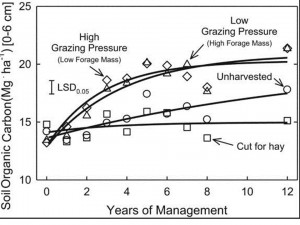
Under each scenario they looked at the amount of soil compaction that occurred, the amounts of soil organic carbon and nitrogen found in the soils, and the amounts of surface plant residues, which help prevent erosion.
They also looked at the effects on the soil of three different fertilizer treatments (inorganic fertilizer alone, organic broiler litter alone, and a mix of inorganic fertilizer and organic broiler litter). The team found that fertilizer type made little difference, but different grazing scenarios produced dramatically different effects.
Land that was grazed produced more grass than ungrazed land, and grazing led to the most carbon and nitrogen being sequestered in soil. Sequestering carbon and nitrogen in the soil has become a major goal for agriculture because it reduces greenhouse gas emissions. Whether grass was grazed moderately or intensely made little difference on sequestration rates. 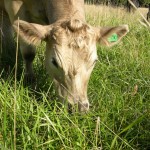
Cutting grass for hay reduced the amount of surface residue and increased soil compaction but didn’t change the amounts of organic carbon and nitrogen in the soil. Land left unused had the highest surface residue and least soil compaction and was better at sequestering carbon in the soil than haying.
From an environmental standpoint, grazing has traditionally been viewed as less desirable than leaving the land unused. But the results, published in the Soil Science Society of America Journal, demonstrate that if growers manage cattle so that pastures are grazed moderately, they’re restoring soil quality and cutting greenhouse gases by keeping carbon in the soil as organic matter rather than releasing it into the atmosphere as carbon dioxide.
Find out more: Alan Franzluebbers is with the J. Phil Campbell, Sr., Natural Resource Conservation Center, Watkinsville, Georgia , Alan.Franzluebbers@ars.usda.gov or visit www.nps.ars.usda.gov

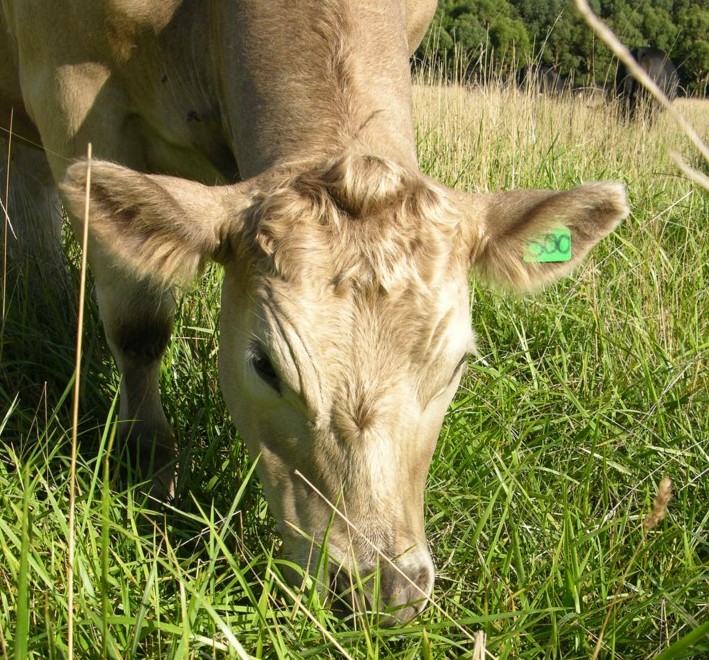
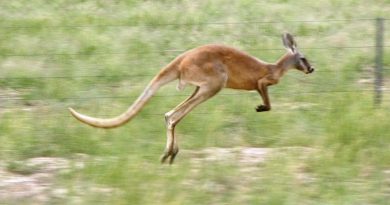
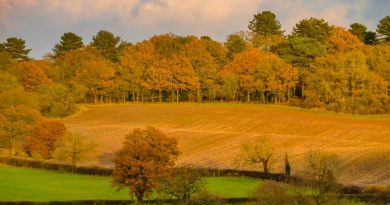

Perhaps it’s the overall health of the plant. Due to
the popularity of organic gardening, organic potting soil and compost are available at most garden centers.
Here are few examples of several well-known conventional food producers, who have recently been expanding their product selection into the organic realm.
While the cost is sometimes higher for organically grown or produced food, this article endeavors to show that the benefits of choosing organic far outweigh the financial cost.
they would look alike but their tastes would
be way different from each other.